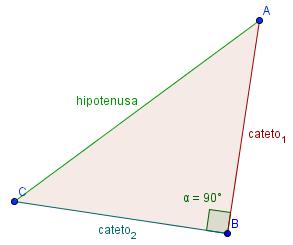Pythagoras' theorem
If some dynamic worksheets are not available, java can be download frompage
First idea
Remember:
- A rigth angle is the one wich is 90º.
- A right triangle has an right angle.
- The hypotenuse is the side opposite the right angle.
Intutively
On the next worksheet, you can see the length of the cathetus and the hypotenuse.
Let's try to find a relationship between theese lengths. That is Pythagoras' theorem about.
Move the triangle vertexes.
- What do you observe?
- Maybe you need to do it twice. Try with integer lengths cathetus and watch what's the hypotenuse length.
- Here you have a hint: Try cathetus length squared and add them. Do you come to any conclusion about a relationship between this add an the hypotenusa length?
Formally
In any right triangle, the area of the square whose side is the hypotenuse is equal to the sum of the areas of the squares whose sides are the two legs (the two sides that meet at a right angle).
Teorema de Pitágoras:
“In any right triangle, the squareof the length of the hypothenusa equals adding together th lengths of the squares of both cathetus”.
Check this on the next dynamic worksheet:
- Move vertex B and C.
- Observe the value of the square of the cathetus.
- Use your calculator to add this values.
- Compare it with the value of th square of the hypotenusa.
Exercises
You can use similar Thales' theory to do the next exercise:





